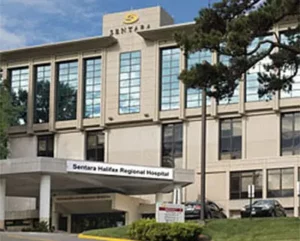
by Dick Hall-Sizemore
Pregnant women in Halifax County will soon be faced with an unwelcome dilemma. Sentara Halifax Regional Hospital (SHRH) in South Boston has announced that, beginning in May, it will begin phasing out its labor and delivery services. Those patients expected to deliver before August 4 will continue to be served. Those obstetric patients expected to deliver after August 4 will be “contacted and supported in their transition to other regional obstetrics providers.”
Sentara framed the decision to close the labor and delivery services at SHRH in financial terms. The service is unprofitable. The county’s population is getting older and fewer babies are being born. There has been a 33% decrease in the number of deliveries from 2018 to 2022.
The most likely alternatives that will be available are hospitals in Danville, Lynchburg, South Hill, and North Carolina. Depending on where one lives in Halifax County (it is the fourth largest county by area in the state), getting to a hospital for delivery could entail a drive of 45 minutes to more than an hour. Of course, there could always be a trip to the emergency room at SHRH.
Some attention has focused on the VCU Health Community Memorial Hospital in South Hill. Ironically, that hospital, while it was independent, had to shut down its maternity ward several years ago. One of the driving factors in its decision to partner with VCU Health was a desire to restore labor and delivery services. In October 2017, VCU Health completed construction of a new hospital in South Hill that included a maternity unit.
This announcement by Sentara comes on top of an earlier announcement by the company to build a new hospital in South Boston to replace the present facility. The core of the current hospital was built in 1953 and there have been several additions over the years. Sentara has explained that health care has changed drastically in recent years and that the new facility will be much more efficient. The projected cost of the new facility is $70 million, which is on the low side for hospitals. There is worry in the community that the new facility will have fewer beds and offer fewer services and, thus, essentially be an outpatient facility. Sentara has been mostly quiet about what services will be offered at the new facility but has confirmed there are no plans to include a maternity ward.
All this is very unsettling to the community. The hospital has long been one of the economic drivers in the county, one of the largest employers and attracting medical professionals. The county, like most of Southside, has been losing population. Recently, it has been moving to attract more young professionals by upgrading broadband service and beginning the construction of a new high school. There is fear that the downgrading of available medical services in the area will undercut those efforts. It will be much harder to sell young couples on coming to the area or staying there when the nearest hospital with obstetrics services is 45 minutes to an hour away.
One reason that this announcement came as such a surprise is that, just last year, Sentara made a big deal of the opening of a new Labor Delivery Recovery and Postpartum unit at SHRH. In announcing the opening of the unit, Sentara said, it “is committed to providing quality care to the communities we serve. The investment into this space ensures the South Boston hospital can continue to provide quality care to area mothers, their babies and their families for years to come.” No wonder the community seems to be experiencing some whiplash.
People are so upset that some political leaders are shoving aside their traditional convictions. Retiring Del. James Edmunds, a staunch, reliably conservative Republican, offered this possible solution, “If they can prove to me they’re losing money and they need another million to make it at least break even, maybe the state can give them another million to keep labor and delivery in the rural area.”
It is interesting that there has been little discussion about the overall financial condition of Sentara. As James Sherlock has documented on this blog, Sentara has a healthy excess cash flow, otherwise known as profit. (See here and here.) One would think that, being a nonprofit entity, Sentara could afford to sustain some loss in a maternity ward that is important to one of the communities it purports to serve.
Note: The source for this story and the quotes is a series of articles in the News and Record. See here, here, here, and here.

Leave a Reply
You must be logged in to post a comment.